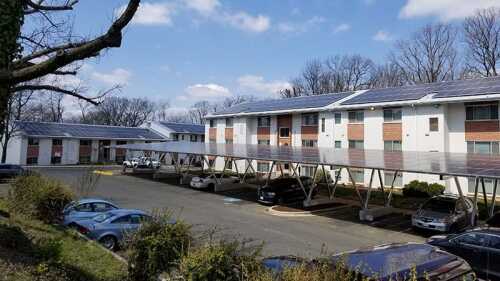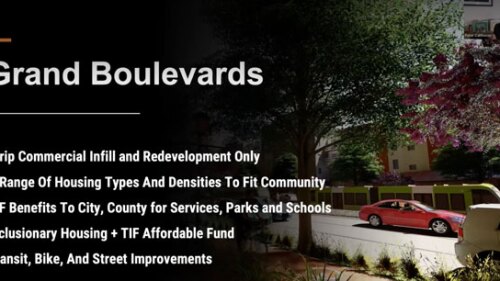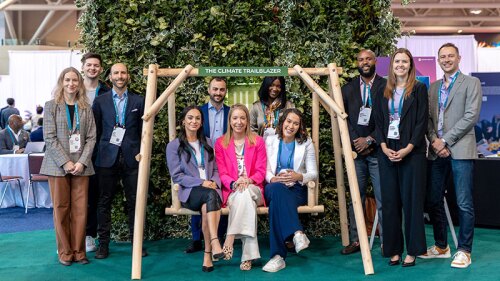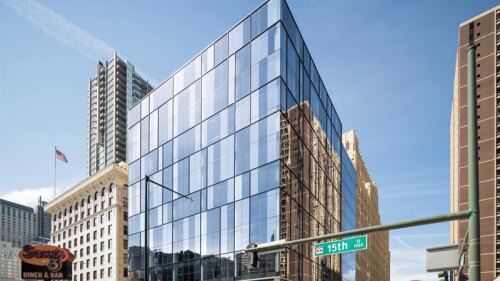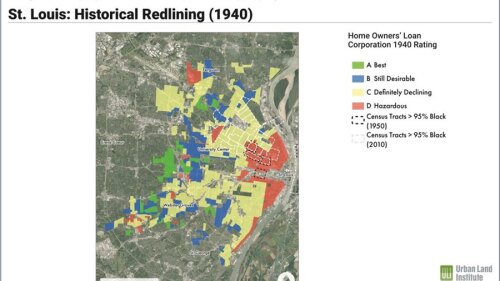Topics
Capital Markets and Finance
The U.S. economy is weeks away from celebrating the start of its record-breaking 11th year of economic expansion, and the latest ULI Real Estate Economic Forecast is pointing to an even longer run that could extend through 2021, as discussed on a webinar hosted by ULI.
Despite stock and bond market volatility in late 2018 and increasing global trade and growth concerns, the April 2019 “ULI Real Estate Economic Forecast” was surprisingly consistent with the previous forecast, released in October 2018. Overall, expectations for 2019 and 2020 are flat to up, while the newly introduced forecast for 2021 calls for slower growth and returns. Moderating growth in gross domestic product (GDP) and jobs for 2019 to 2021 should lead to slower but still positive real estate demand and absorption. Expectations for the real estate market are modest, and the sector is relatively well prepared for slower economic growth, if it occurs.
This 44-unit residential rehab, financed by three mission-driven lenders, preserved workforce/affordable homes and reduced neighborhood crime—and meets nearly all its annual electric demand with on-site solar power.
Design & Planning
In a recent ULI Terwilliger Center webinar, titled “Grand Boulevards: A Framework for Workforce Housing, Environmental Repair, and Economic Balance,” focused on a possible avenue for increasing the availability of housing.
Destination Crenshaw, a transformative 1.3-mile (2 km) infrastructure project scheduled to open in fall 2022, was the focus of a ULI Los Angeles virtual event in July, highlighting plans to boost the Crenshaw community through economic development, job creation, and environmental healing while elevating Black art and culture.
Ten airport designs enhance the travel experience and highlight their local and regional contexts.
Development and Construction
A long-term trend of housing underproduction exacerbated by rising inflation and economic uncertainty threatens home attainability for millions of people across the United States, according to the 2022 Home Attainability Index, a comprehensive new study from the Urban Land Institute’s Terwilliger Center for Housing.
Endless skyscrapers, narrow streets, hanging neon signs amidst the concrete jungle. Welcome to Hong Kong’s urban fabric, both fascinating in its vibrancy, and overwhelming in its density. But in this hyper-dense city lies Fairview Park, a pioneering residential development in complete contrast to Hong Kong’s urbanity.
With help from a $350,000 gift from former global governing trustee Michael Spies, ULI is launching an innovative program in which artists will be invited to work with developers in the early stages of real estate projects. The Art in Place program will help developers form creative partnerships with artists in fields ranging from painting and sculpture to dance, theater, music, and even culinary arts.
Resilience and Sustainability
The ULI Young Leaders Group (YLG), district council, and product council teams recently completed another cycle of the Emerging Leaders Product Council Program. This opportunity is designed to help qualified young leaders secure guest spots on product councils at the Spring Meeting and was originally established as a means for YLG members to integrate more deeply into ULI programming.
An upcoming ULI report highlights key steps that developers and asset managers can take to mitigate environmental impacts and enhance health through materials.
In St. Louis, a pressing home repair crisis is disproportionately affecting Black homeowners who struggle to afford the upkeep of their homes. This issue is deeply rooted in a legacy of racial injustice, including redlining and restrictive covenants. To find solutions, ULI St. Louis collaborated with local organizations to develop strategies aimed at establishing a Home Repair Network, which will create a new centralized umbrella organization to address the city’s home repair dilemma.
Issues and Trends
Third edition evaluates top 30 global powerhouses report reveals world’s leading urban hubs rise in popularity post pandemic. Challenges include new economic conditions, rising costs, adaptation to hybrid work, innovation gaps, the climate imperative, and transition to social, mixed-use districts.
Guy Kawasaki—chief evangelist at Canva, former chief evangelist for Apple, and bestselling author—summed up insights gleaned from his years in tech and as host of the Remarkable People podcast, interviewing such luminaries as Margaret Atwood, Tony Fauci, Jane Goodall, and Steve Wozniak.
As congregations across North America grapple with shrinking membership and aging facilities, a new opportunity is emerging: transforming faith-owned land into affordable housing and community-serving spaces. At the 2025 ULI Fall Meeting in San Francisco, panelists in the session “Spiritual Brownfields: Declining Congregations and Opportunities for Housing on Faith-Owned Land” explored how churches and developers are partnering to bring mission-driven housing to underused sacred sites.

